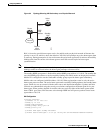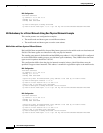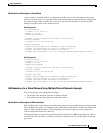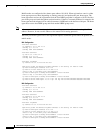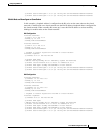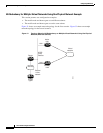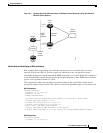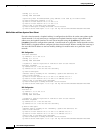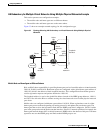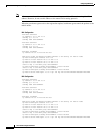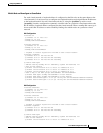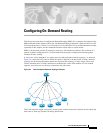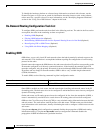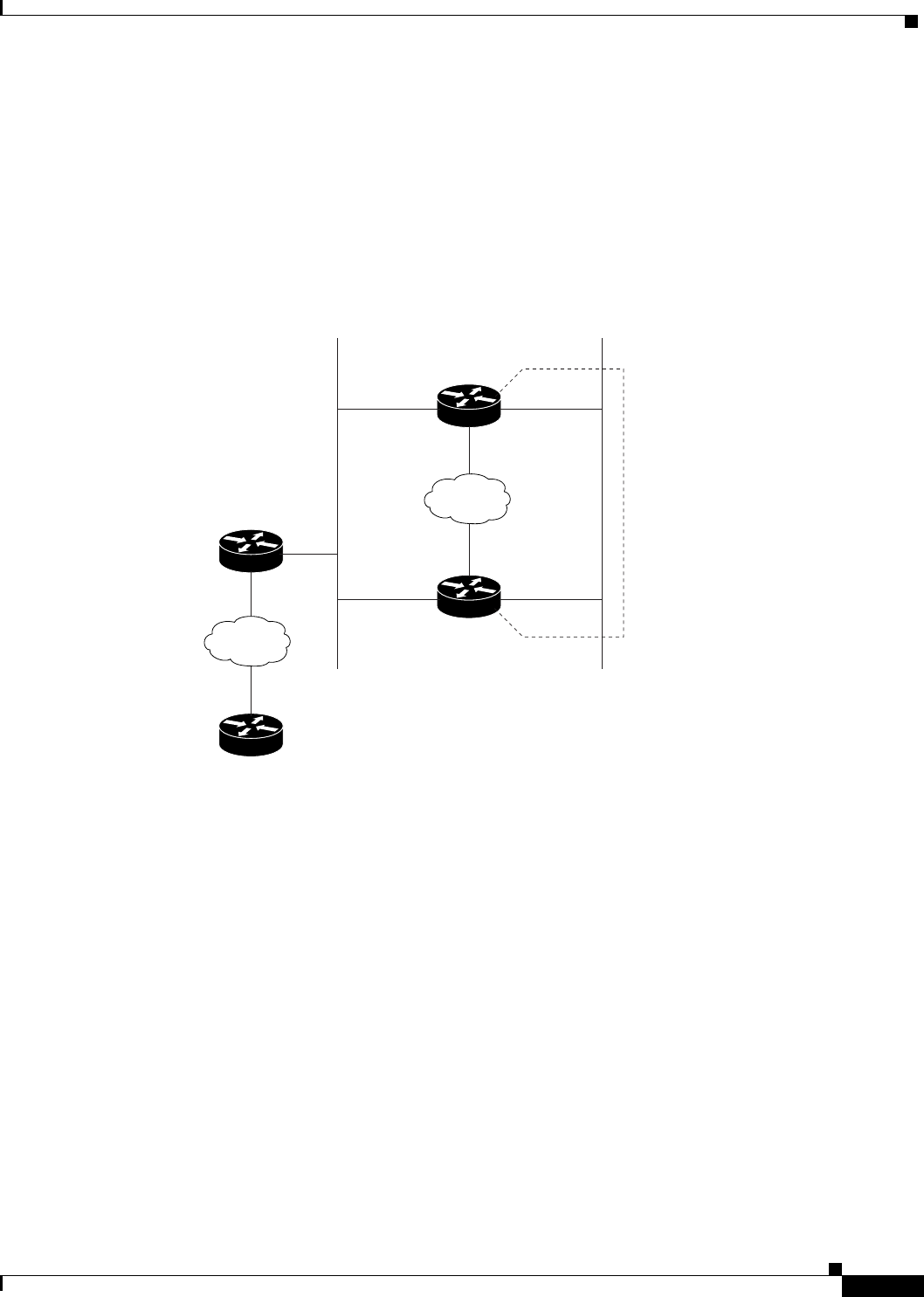
Configuring Mobile IP
Mobile IP Configuration Examples
IPC-189
Cisco IOS IP Configuration Guide
HA Redundancy for Multiple Virtual Networks Using Multiple Physical Networks Example
This section presents two configuration examples:
• The mobile node and home agent are on different subnets.
• The mobile node and home agent are on the same subnet.
Figure 33 shows an example network topology for this configuration type.
Figure 33 Topology Showing HA Redundancy on Virtual Networks Using Multiple Physical
Networks
Mobile Node and Home Agent on Different Subnets
HA1 and HA2 share responsibility in providing home agent service for mobile nodes on virtual networks
20.0.0.0, 30.0.0.0, and 40.0.0.0. Both home agents are configured with a global home agent address of
10.0.0.10, which is the address of their loopback interface. This configuration allows home agents to
receive registration requests and packets destined to 10.0.0.10.
The loopback address is used as the global HA address instead of the HSRP group addresses 1.0.0.10
and 2.0.0.10 to allow the HAs to continue serving the virtual networks even if either physical network
goes down.
Mobile nodes are configured with home agent address 10.0.0.10. When registrations come in, either
home agent processes them (depending on routing protocols) and updates the peer home agent. The
home agent that receives the registration finds the first HSRP group that is mapped to 10.0.0.10 with a
peer in the group and sends the update out that interface. If there is a network problem (for example, the
home agent network adapter fails or cable disconnects), HSRP notices the absence of the peer. The home
agent does not use that HSRP group and finds another HSRP group to use.
Active
HA1
Loopback
interface
Standby
HA2
Home
network 1
Home
network 2
Router
Internet
Foreign
agent
HSRP
group
address 1
HSRP
group
address 2
42304
Virtual
networks



